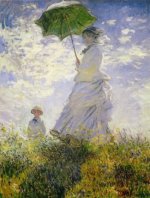One reason Mary Ellen Mark may have reacted the way she did to digital photography is that her photos rely on her getting very close to strangers, and to building a tight net of trust so that she can take authentic photos of them. With digital, that can actually be faked -- the guy got caught doing it, but remember the LA Times guy who made a good war photograph out of two not-so-good shots? He made that dramatic shot on the fly, with Photoshop on a laptop, in the field...A real good Photoshop guy would have created a hell of a fake photo, and would never have been caught -- not even by the people in the photograph, I suspect. And it would have had great continuing political effect, since it seemed to show a heavily armed US soldier intimidating an Arab guy and his small child, when in fact, IIRC, the photos were made at a food distribution point.
When the Newsweek writer was talking about the "end," I think it referred to a kind of trust you could have with a silver photo. When the Russians would erase a person from a photo on Lenin's tomb, they'd always get caught, because before digital, that was extremely hard to do convincingly. Remember the old "flying saucers photos from the 50s? And there's a famous art photograph, by a photograoher whose name escapes me at the moment, of a plaza scene of people and their shadows in the early morning. One of the walkers apparently was placed badly, creating an ambiguous image, and so he was very carefully and skillfully removed from the photo, using old technology, re-photographing, etc...except the photographer forgot to remove the missing guy's shadow, which is still there, a trace of reality...
It may be possible, I suppose, for the trust to be entirely eliminated, leaving the viewer without any intellectual fame of reference. Is this photo real, or is it all Photoshop filters? Jeff Wall is attacking the "reality" of photos from a different direction, but it has the same effect...the trust diminishes, and without getting into any big argument about it, I think it was an important aspect of photography.
How many people now can look at a photograph -- any photograph, like a war photograph, and react in a visceral way, without the automatic...wait a minute? Is that a Photoshopped propaganda photo? Or is that real? Because it it's real, I'm going to act this way -- and if it's not, I'm going to act another way; and if I can't tell, I won't act at all. I think that's a serious problem.
JC



